
Play for Dream MR Hands-On Experience – Getting Some Personal Time With Their New Spatial Computer
At the recent launch of the Play for Dream MR headset that took place in Singapore, I had the opportunity to get a personal hands-on with their spatial computer. In a guided session, they shared a taste of its capabilities and what it is capable of offering at launch – here’s our Play For Dream MR hands-on where we share our thoughts and experiences on this upcoming mixed reality headset that will debut in Malaysia this coming October 2024.
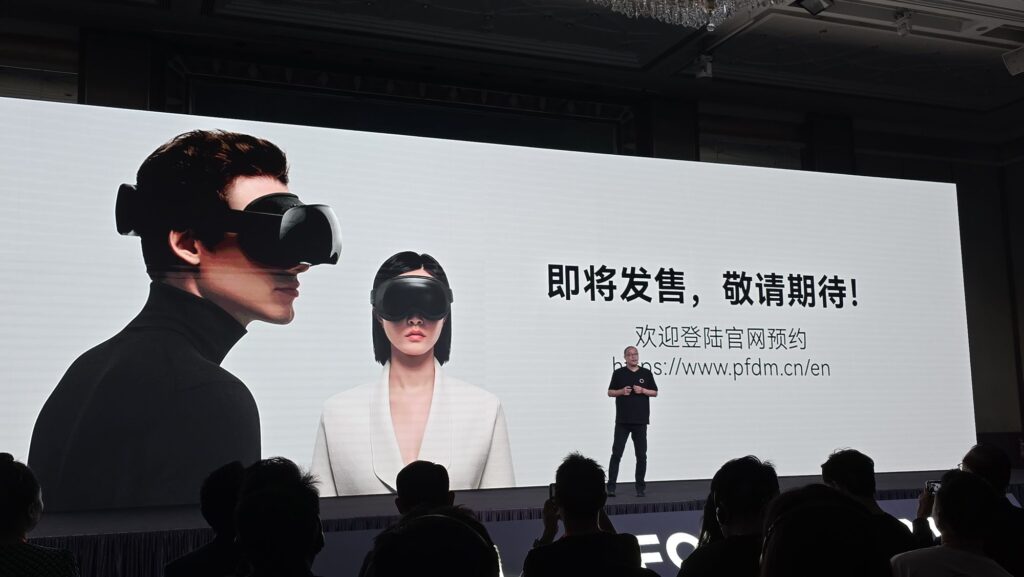
What is the Play for Dream MR spatial computer?
Also referred to as a spatial computer on account of its capability to offer mixed reality input, the Play for Dream mixed reality (MR) headset completely covers the eyes with the capability for head, eye and hand tracking along with input from two controllers, one for each hand. In effect, the user can physically interact with their environment in real time while having virtual objects and inputs projected onto the visor too, hence the term.
For the uninitiated, the Play for Dream MR headset is impressively equipped, featuring an 8K Micro OLED display to offer a jaw-dropping 3,882 pixels per inch while being able to offer a 103-degree angle field of view. While the user can peer out and even completely overlay their field of view with virtual reality imagery, landscapes and whatnot, the multilayered visor headset doesn’t allow people to peer in.
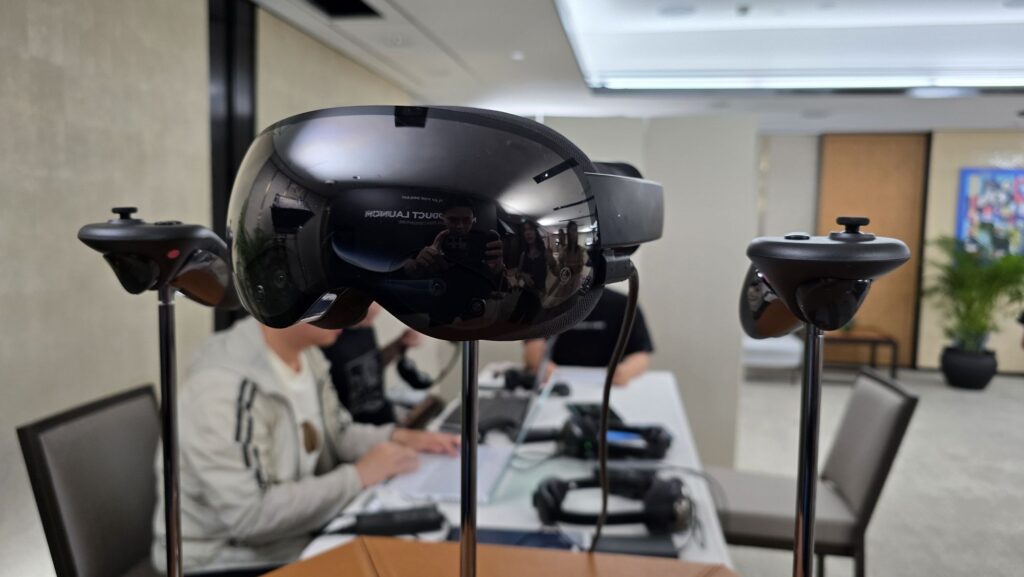
To capture input, gestures and the like, it comes with a total of 11 cameras, 7 types of sensors and a whopping 22 infrared LEDs while packing a new Snapdragon XR2+ Gen 2 chipset paired with 16GB LPDDR5X RAM and wither 512GB or 1TB of UFS 3.1 storage to power content. Keeping it powered is a built-in lithium polymer battery though the size and capacity wasn’t specified during the briefing save that it can last for an hour or two before needing a recharge. It also has the option to support an external battery pack with the Play for Dream MR hands-on unit featuring a conventional power bank to keep it juiced during the test.
According to Play for Dream Technology, the company behind the headset, the device will be priced around the US$1X99 mark with the missing digit remaining a mystery for now, meaning that it can cost anywhere from US$1,099 all the way to US$1,999. The only way we’ll know for sure is when it launches in Singapore and Malaysia this coming October 2024. Japan, Thailand, Vietnam and Indonesia are slated as the next wave with a launch in 2025.
Play for Dream MR Hands-On – Setup and how did it feel wearing and using it?
My Play for Dream MR hands-on experience was a guided tour within specific scenarios in a controlled environment using a prototype version of the headset. After being ushered into the testing area, Play for Dream Technology representatives sat me down and went through an initial setup where they asked me if I had myopia and then measured my pupillary distance – the space between my two pupils before inputting these details into the Play for Dream MR.
At launch, the headset could crunch these numbers and determine the pupillary distance automatically though it wasn’t immediately clear if it could measure myopia though Play for Dream Technology stated that they do have corrective lenses that could be added to the device for those with short sightedness.
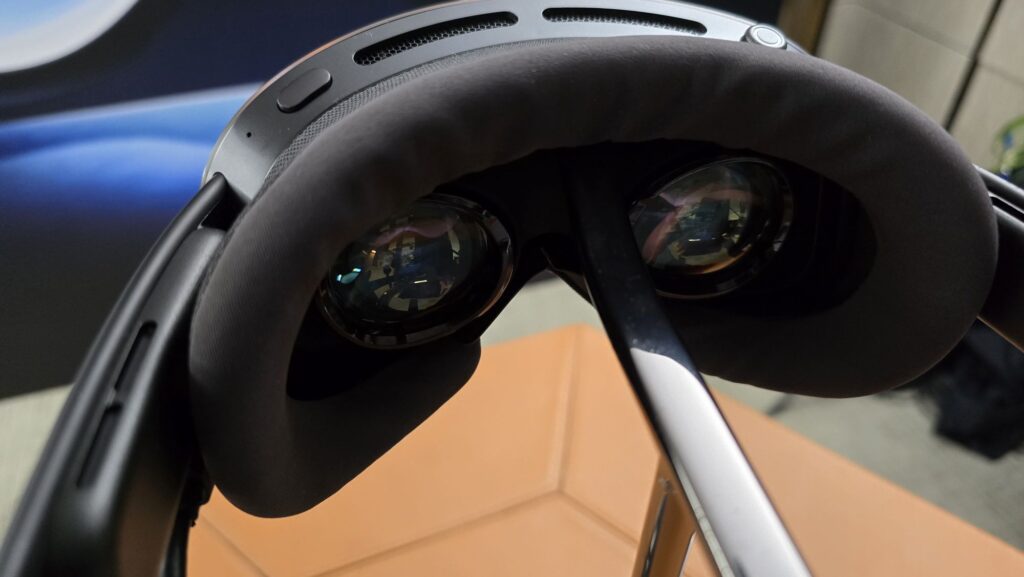
Donning the headset involved adjusting the fit slightly and then turning the rear knob to tighten the fit around my bonce. Once that bit of business was sorted out, I was issued both controllers which had a rather ergonomic feel and which had trigger buttons within reach of the index finger and the thumbs along with thumb sticks for fine control input.
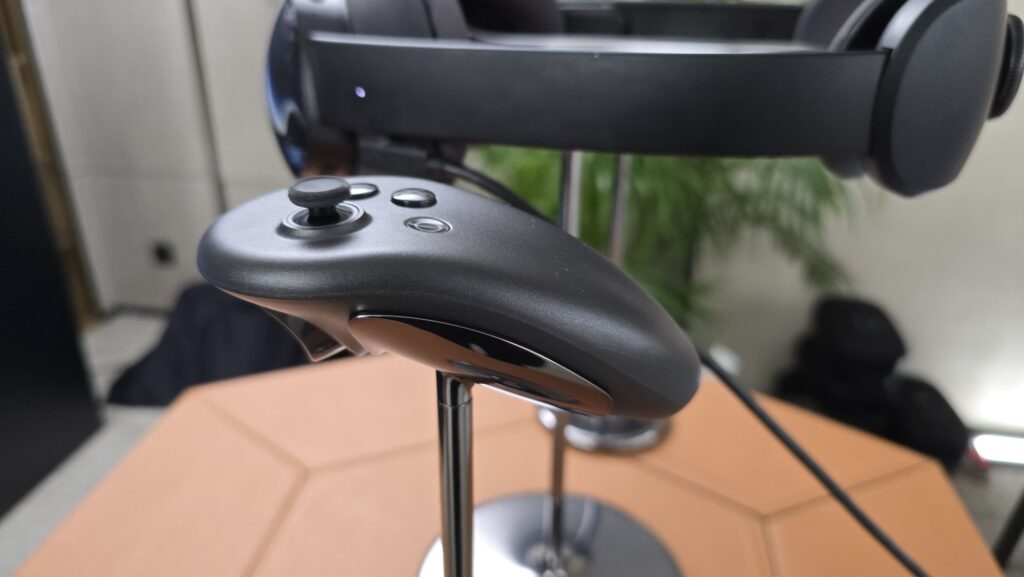
The overall look and design of the headset is somewhat akin to Apple’s Vision Pro MR headset though the representative onhand explained that the Play for Dream MR headset was not only slimmer, but lighter too in the bargain while offering a wider field of view at 103-degrees versus the competition’s 100-degree field of view.
While my experience lasted about 30 minutes, the Play for Dream MR headset fit snugly, was relatively comfortable and wasn’t heavy enough that it caused discomfort during the hands-on session.

In the first experiential zone, I was set down on a sofa to field test watching mixed reality movie trailers including a 3D version of Avatar 2 which felt wonderfully vivid with distinct foreground and background separation. There was also a demo of a mixed reality background – that of a desert – popping up as a demo along with a close-up look of a mixed reality video of cosplayers two paces away acting cute. At first blush, our Play for Dream MR Hands-On unit offered a very convincing three-dimensional experience.
The user interface itself features representations of my hands wielding the controllers when they entered my field of view with installed apps floating as circular icons. At launch, they stated that the Play for Dream MR headset will have access to Steam VR apps, interactivity with PCs and smartphones, optimisations for Android apps as well as game consoles too but which ones weren’t stated as yet. In our Play for Dream MR Hands-On experience, the unit itself did not have any access to app stores and had a predetermined selection of content and apps to play with.
At the official launch, footage showed that the headset itself has support for hand gestures without the need for controllers but this wasn’t available in our test sample and interacting with the device itself was solely via the provided controllers.
The next zone was done standing up in a corner facing two walls. In this zone, I was shown an underwater scene with floating jellyfish floating past, through, over and under me. It felt vivid though the jellyfish themselves were non-interactive and meandered their way through the area. Of interest was a virtual display which showed a movie trailer virtually projected on one of the walls nearby that had positional audio capabilities.
The closer I got to the virtual TV the louder it got and the farther away I was, it got quieter. Another demo was shown of a model, this one taken onsite with the background matching the test area exactly preening and playing with a bubble blower which felt especially vivid though it was non-interactive.
The second to last demo zone was a hands-on experience in a boxing game against robotic opponents with the controllers allowing me to use my fists to land a few good ones on the opposition. There was haptic feedback so there was some sensation socking the robots though it seems I was unable to grapple or deliver any body blows beyond simple jabs, hooks and uppercuts to the robot’s face. It was a fun diversion from viewing passive content and felt both vivid and fun. There was a table tennis game as well though I was unable to experience that in the short time I had with the device.
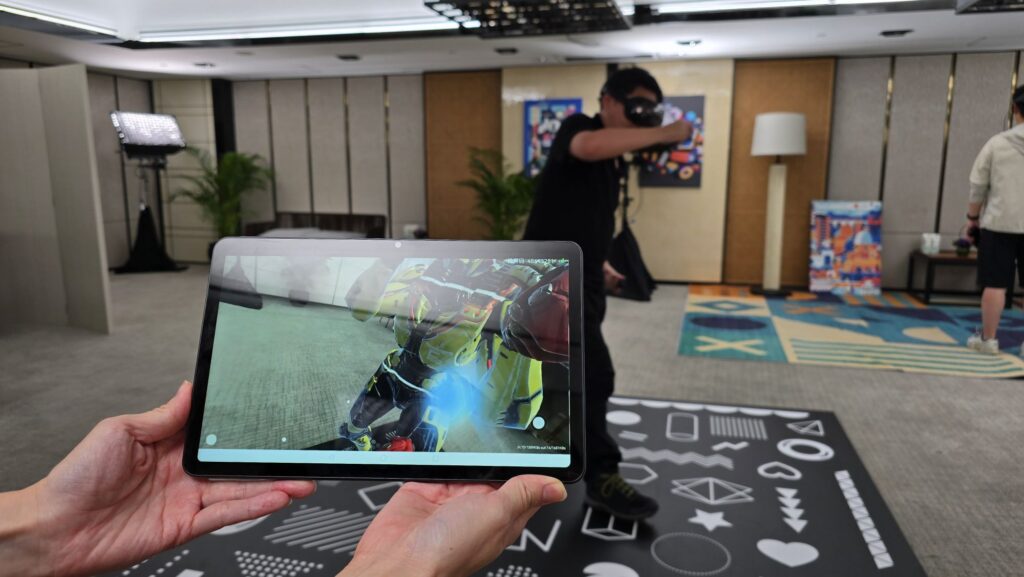
The last experiential zone in my Play for Dream MR Hands-On tour involved sitting down again – thankfully – but with a keyboard and mouse as a guide demonstrated how to multitask, opening up an Microsoft office document on one window and then a browser window in another for multitasking with the provided keyboard allowing me to input text in the document itself. While the test unit only allowed up to two open windows, the product at launch was stated to offer up to five simultaneous open windows for multitasking at a time.
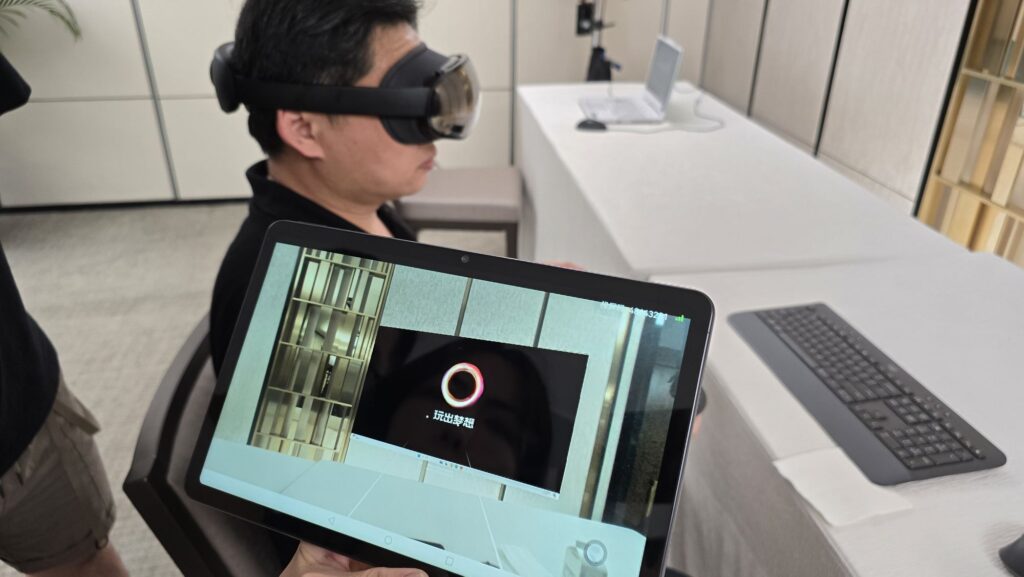
As first impressions go, my Play for Dream MR hands-on certainly offers a promising look of the future with potential applications for productivity and gaming though it wasn’t the final version of the device so I can’t offer a firm opinion yet until I get a test unit for evaluation and have an idea how much it would actually cost when it arrives in Malaysia this October 2024. Check out our prior Play for Dream MR launch coverage here and their official site at https://www.pfdm.cn/en/#/index
